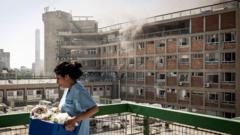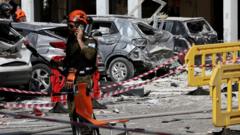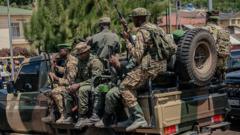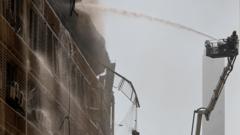Iran contends that its nuclear ambitions are peaceful, yet tensions have escalated in recent days following military strikes from both sides, with devastating consequences.
**Israel Targets Arak Nuclear Reactor in Airstrike Amid Intensified Conflict with Iran**
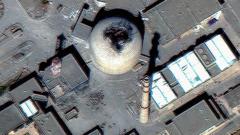
**Israel Targets Arak Nuclear Reactor in Airstrike Amid Intensified Conflict with Iran**
In a significant escalation of hostilities, Israel bombed Iran's under-construction Arak reactor, aiming to thwart potential nuclear weapons development.
The Israeli Air Force has launched a targeted attack on the Arak heavy water reactor located in central Iran, marking the latest escalation in an ongoing conflict between the two nations. The assault took place during the seventh day of escalating tensions and aimed specifically at the reactor's core seal, as stated by the Israeli military. Their objective was to prevent any potential progress in Iran's nuclear weapons development. The International Atomic Energy Agency (IAEA) confirmed the strike, noting that there were no nuclear materials stored at the facility at the time.
While Iran has long maintained that its nuclear program is for peaceful purposes, the site has remained a focal point of international concern. Under a 2015 agreement with world powers, Iran had committed to redesigning the Arak reactor, which has been historically capable of producing weapons-grade plutonium. The agreement required significant alterations to ensure it could not be used for military purposes. Despite these assurances, recent intelligence indicated that Iran had not fully complied with the conversion process.
Footage released by the Israeli military showcased the moment a bomb struck the reactor's domed roof, creating substantial destruction and billowing smoke. Satellite images captured the extent of damage, showing significant holes in the reactor building along with destroyed facilities of a nearby heavy water production plant. Iranian officials reacted by claiming that the area had been secured beforehand and that no radioactive contamination occurred as a result of the attack.
The airstrikes did not halt there; additional missions targeted the Natanz facility, Iran's central hub for uranium enrichment, along with the Isfahan Nuclear Technology Centre. These operations have drawn widespread condemnation, especially following the U.S. withdrawal from the nuclear deal in 2018, which had aimed to curtail Iran's nuclear aspirations. Since then, Iran has reportedly surpassed uranium enrichment limits, now producing material enriched to levels dangerously close to weapons-grade.
Israeli Prime Minister Benjamin Netanyahu justified the strikes, warning that Iran's continued advancements could lead to the production of nuclear weapons in a matter of months. In contrast, Iranian officials condemned the actions as violations of international law, asserting its commitment to a non-nuclear stance.
The ongoing conflict continues to inflict severe human costs, with casualties reported on both sides. As hostilities persist, the possibility of further military action looms, escalating fears of a larger regional conflict. Both nations are bracing for potential retaliation with missile attacks, raising alarms over the human toll as uncertainty about future engagements remains.
While Iran has long maintained that its nuclear program is for peaceful purposes, the site has remained a focal point of international concern. Under a 2015 agreement with world powers, Iran had committed to redesigning the Arak reactor, which has been historically capable of producing weapons-grade plutonium. The agreement required significant alterations to ensure it could not be used for military purposes. Despite these assurances, recent intelligence indicated that Iran had not fully complied with the conversion process.
Footage released by the Israeli military showcased the moment a bomb struck the reactor's domed roof, creating substantial destruction and billowing smoke. Satellite images captured the extent of damage, showing significant holes in the reactor building along with destroyed facilities of a nearby heavy water production plant. Iranian officials reacted by claiming that the area had been secured beforehand and that no radioactive contamination occurred as a result of the attack.
The airstrikes did not halt there; additional missions targeted the Natanz facility, Iran's central hub for uranium enrichment, along with the Isfahan Nuclear Technology Centre. These operations have drawn widespread condemnation, especially following the U.S. withdrawal from the nuclear deal in 2018, which had aimed to curtail Iran's nuclear aspirations. Since then, Iran has reportedly surpassed uranium enrichment limits, now producing material enriched to levels dangerously close to weapons-grade.
Israeli Prime Minister Benjamin Netanyahu justified the strikes, warning that Iran's continued advancements could lead to the production of nuclear weapons in a matter of months. In contrast, Iranian officials condemned the actions as violations of international law, asserting its commitment to a non-nuclear stance.
The ongoing conflict continues to inflict severe human costs, with casualties reported on both sides. As hostilities persist, the possibility of further military action looms, escalating fears of a larger regional conflict. Both nations are bracing for potential retaliation with missile attacks, raising alarms over the human toll as uncertainty about future engagements remains.


